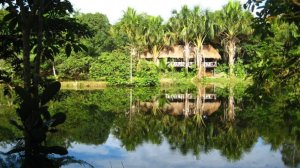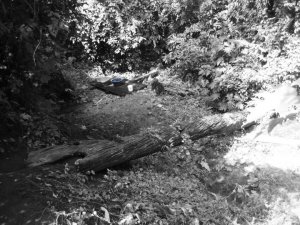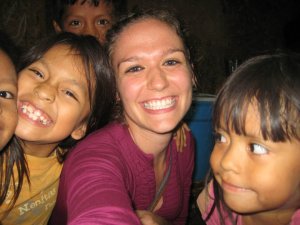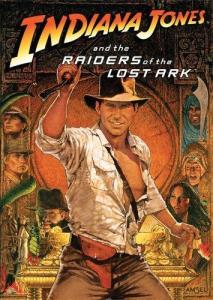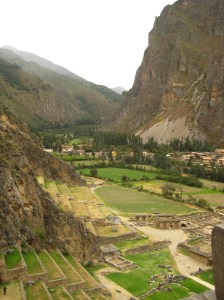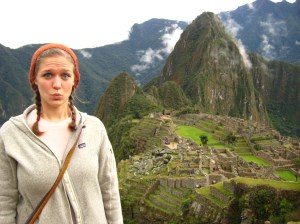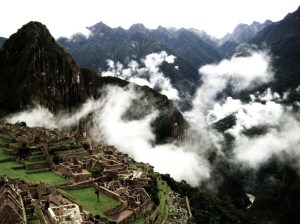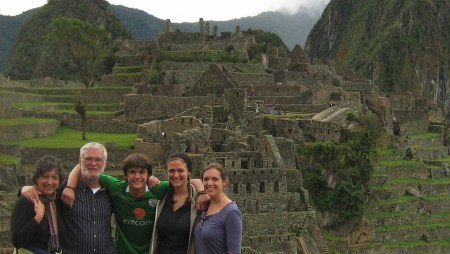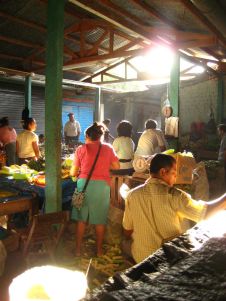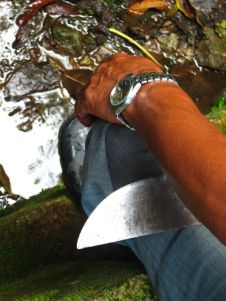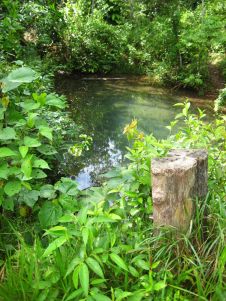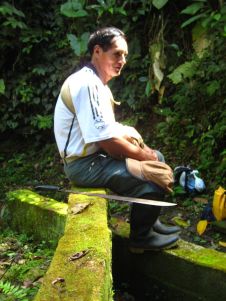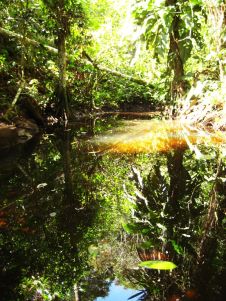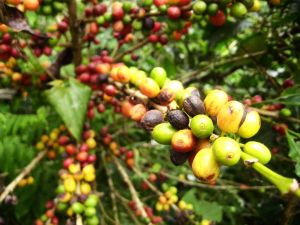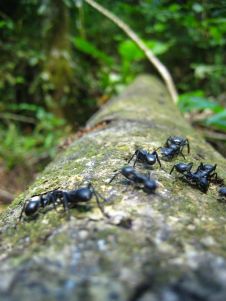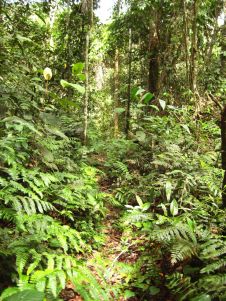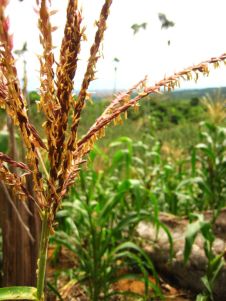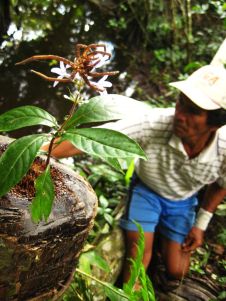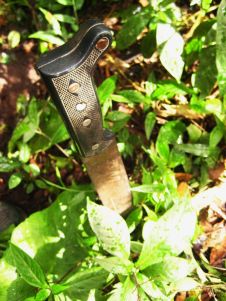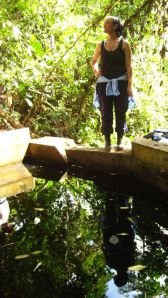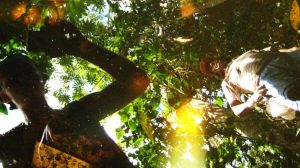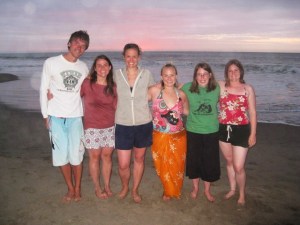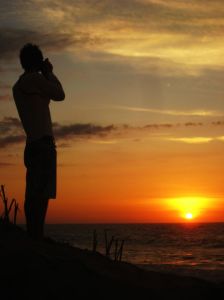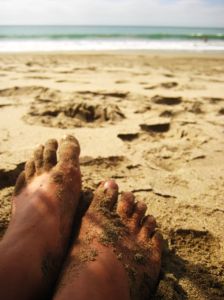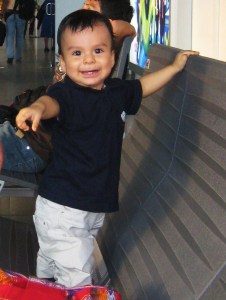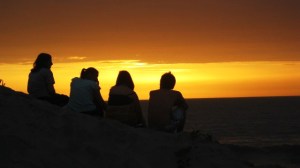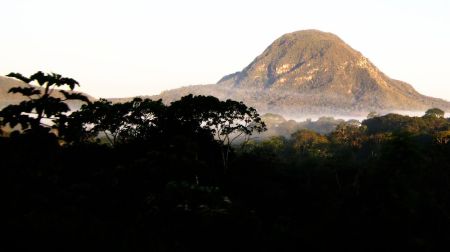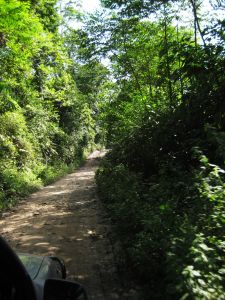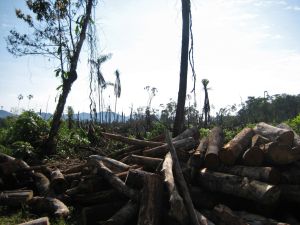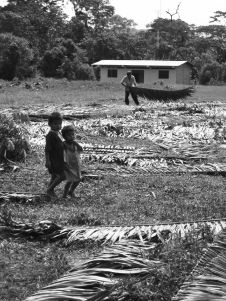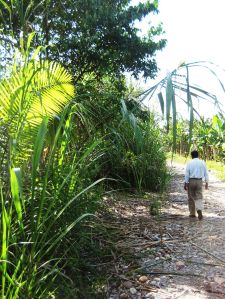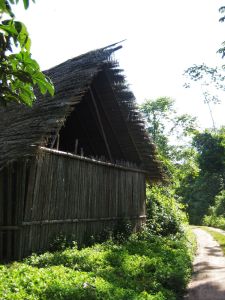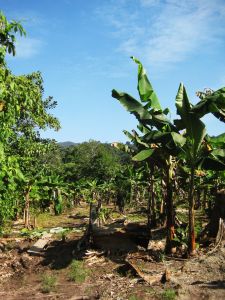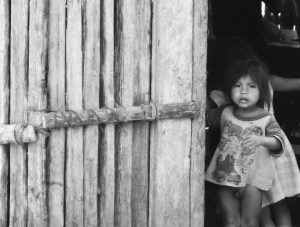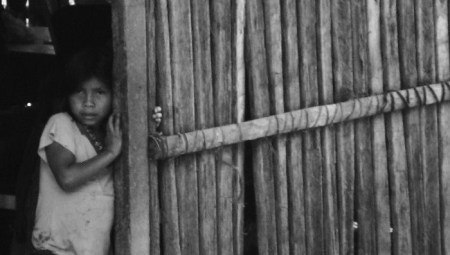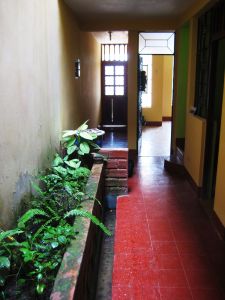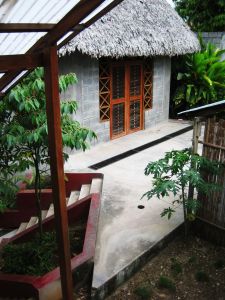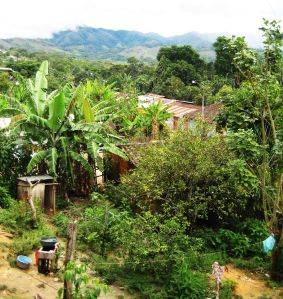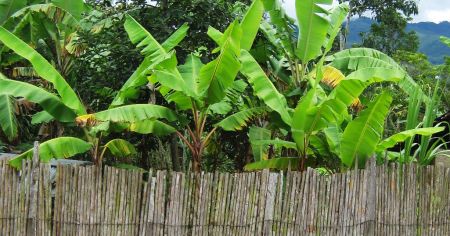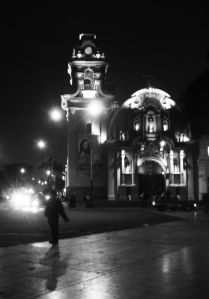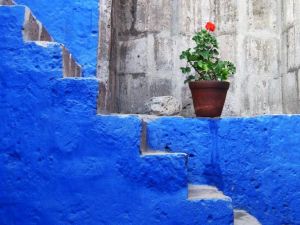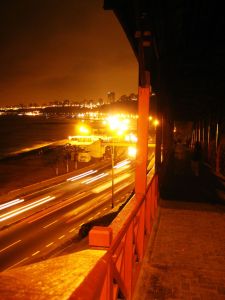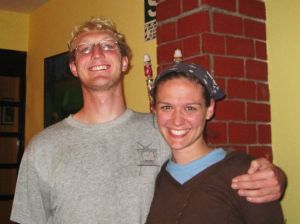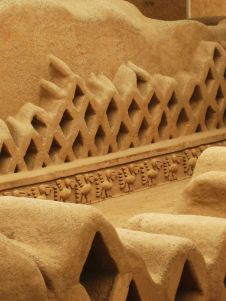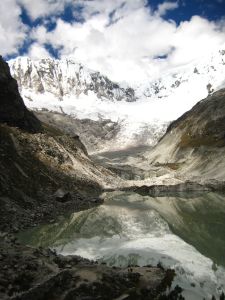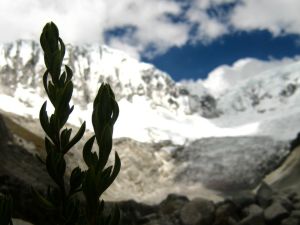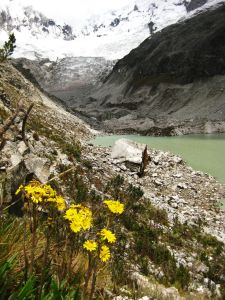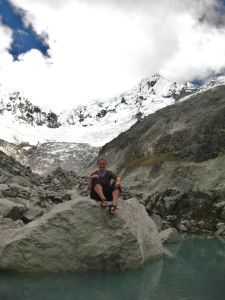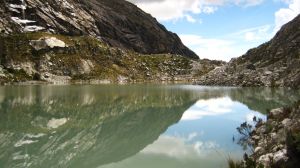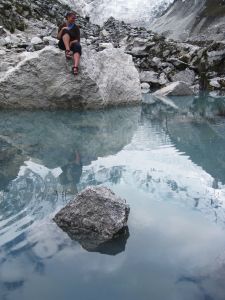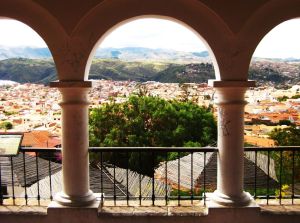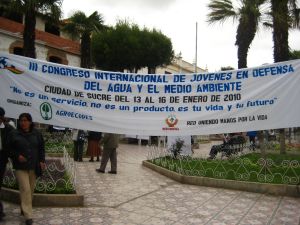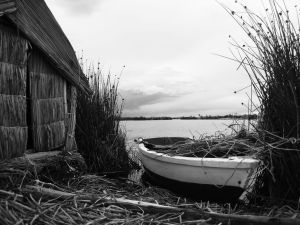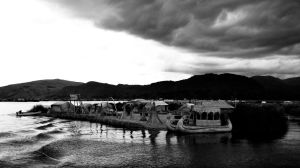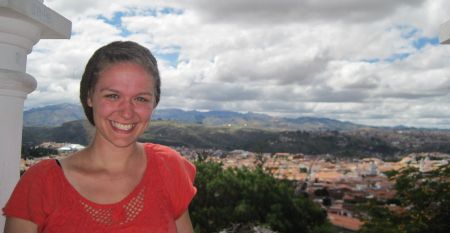Disclaimer – I wrote this sermon in January of 2011, a little over 5 months after leaving Peru and moving back to the US. I delivered it to my home church, Oak Ridge First Presbyterian Church on January 2. Although it was a few months ago and most would think I’m “readjusted” to the States by now, I still struggle. These are a few reflections on my experience…it barely scrapes the surface.
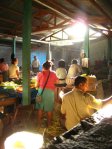 At first, when I was asked to speak to you about my experience as a Young Adult Volunteer in Peru, my initial instinct was to say no. I admit – I didn’t want to. The thought of talking about my experience, summarizing it, sharing its impact on my life, is a daunting one. How do I tell you – honestly and fairly and vulnerably – about how hard it was for me, physically, emotionally, and spiritually? How do I help you see the Peruvian people as I see them – beautiful and wonderful and complicated reflections of God? How do I paint you a 12-15 minute picture of Peru where you can feel the thinness of the air in the Andes when you breathe, the sticky and pungent heat of the Amazon, the dry desert of Lima where the pollution dirties your hair? A picture of Peru where you taste the best avocado of your life and learn to haggle prices with taxi drivers trying to take advantage of a gringa? A picture of Peru where you struggle to communicate even simple ideas but eventually learn how to crack a joke in another language? A picture of Peru where you’re surrounded with more shades of green than you knew existed, and where you are accosted on all sides by the overwhelming colors and scents and sounds and sheer mass of pressing people in the market? How do I paint you a picture of Peru where you look up and swear you can see God in the millions of stars twinkling through the thin atmosphere, and then look down to see hovels for houses and children digging through garbage to see if there’s anything worth selling?
At first, when I was asked to speak to you about my experience as a Young Adult Volunteer in Peru, my initial instinct was to say no. I admit – I didn’t want to. The thought of talking about my experience, summarizing it, sharing its impact on my life, is a daunting one. How do I tell you – honestly and fairly and vulnerably – about how hard it was for me, physically, emotionally, and spiritually? How do I help you see the Peruvian people as I see them – beautiful and wonderful and complicated reflections of God? How do I paint you a 12-15 minute picture of Peru where you can feel the thinness of the air in the Andes when you breathe, the sticky and pungent heat of the Amazon, the dry desert of Lima where the pollution dirties your hair? A picture of Peru where you taste the best avocado of your life and learn to haggle prices with taxi drivers trying to take advantage of a gringa? A picture of Peru where you struggle to communicate even simple ideas but eventually learn how to crack a joke in another language? A picture of Peru where you’re surrounded with more shades of green than you knew existed, and where you are accosted on all sides by the overwhelming colors and scents and sounds and sheer mass of pressing people in the market? How do I paint you a picture of Peru where you look up and swear you can see God in the millions of stars twinkling through the thin atmosphere, and then look down to see hovels for houses and children digging through garbage to see if there’s anything worth selling?
How do I paint you an honest picture of Peru? I want you to see Peru as I see it – its spectacular beauty and abject poverty at odds with one another in my mind. It seems an impossible task. I don’t even know what my experience meant to me – how could I explain it to you? Let me start by sharing one or two short anecdotes that were particularly meaningful to me. Some of you may have heard them before, so bear with me.
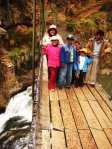 * When I first arrived in Peru, I was placed with a very poor family. I hate to put it that way, because they were so much more than that and saying “poor” is too much of an oversimplification, but the fact remains that by our standards, they were very, very poor. Many of our first (very simple) conversations revolved around what life was like in the United States. Do all houses really have a yard with a garden and beautiful flowers like on TV? Does it really snow in the winter and is it always hot in the summer? (Keep in mind, the city of Huancavelica is at 12,000 ft elevation, so it is always cold. Their seasons are cold and wet vs. cold and dry.) In the United States, do people really speak English and does everyone have blue eyes? Are there really cemeteries for pets?? Eventually they asked me, point blank, “Does your family have a car?” In Peru, especially in the poorest provinces, owning a car is a huge sign of wealth. Was my family in the US rich enough to have a car? I said yes, we had a car, but simply couldn’t bring myself to tell them that we had three.
* When I first arrived in Peru, I was placed with a very poor family. I hate to put it that way, because they were so much more than that and saying “poor” is too much of an oversimplification, but the fact remains that by our standards, they were very, very poor. Many of our first (very simple) conversations revolved around what life was like in the United States. Do all houses really have a yard with a garden and beautiful flowers like on TV? Does it really snow in the winter and is it always hot in the summer? (Keep in mind, the city of Huancavelica is at 12,000 ft elevation, so it is always cold. Their seasons are cold and wet vs. cold and dry.) In the United States, do people really speak English and does everyone have blue eyes? Are there really cemeteries for pets?? Eventually they asked me, point blank, “Does your family have a car?” In Peru, especially in the poorest provinces, owning a car is a huge sign of wealth. Was my family in the US rich enough to have a car? I said yes, we had a car, but simply couldn’t bring myself to tell them that we had three.
* Halfway through the year, I moved to the city of Moyobamba in the Amazon for health reasons. I worked with Paz y Esperanza (Peace and Hope), a non-profit organization that worked on social and environmental justice issues with the surrounding indigenous communities. On one of our trips into the forest, we visited a community called Huasta, a very small town of maybe 25 families. While walking around with other Paz y Esperanza workers, I discovered that this community had no electricity and no running water. The children were barefoot and sometimes naked. Their bellies were distended and hair course and pale, signs of malnutrition. Our guide offered to show us where this community got its drinking and cooking water and led us down a small path. To the left was a muddy puddle of water with a decaying log to its side. To the right was another puddle of water, slightly deeper, where a young woman about my age was bathing. She showed no embarrassment at her nakedness and stared at us with a detached gaze as we were told the puddle to the left was for drinking water. I felt sick to my stomach when I thought about the drinking water that fills our toilet bowls.
After what I witnessed and experienced in Peru, how can I presume to stand behind a pulpit and talk about God when my faith has been challenged beyond any previous limits and, if pressed, I really couldn’t tell you what I believe?
My mom asked me last night what the “theme” of my sermon was. What theme? I wish my theme was all of the ways I saw God at work in Peru. Sadly, I was more frustrated with all of the ways God seemed to be absent, both in my life and in the lives of the most destitute of Peru. I kept waiting to “see” God. I kept waiting for God and kept getting more and more frustrated. I felt abandoned.
I must be honest with you. Standing behind this pulpit, I feel like something of a fraud. I’d like to tell you I had profound revelations about God, but I didn’t. I’d like to tell you that my faith overcame incredible obstacles, but it didn’t. I stand before you more confused (and sometimes angry) than ever. This world is unfair. Poverty is unfair. Wealth is unfair. Our sense of entitlement is unfair. No, it’s more than that – it’s dangerous and harmful. Peru left me with a lot of unanswered questions and a lot of unresolved feelings, most of which are some variation of guilt or anger.
When I think about God and the justice that seemed to be lacking in Peru, I realize that God has given us the tools and, moreover, the empathy to live in a fair and just world. God isn’t letting us down. We’re the ones letting God down. God didn’t create the system that allows for such disparities in the world. He created us, and we created this system.
So what is my theme? I suppose my theme is a little more upbeat than the rest of my sermon has been, because, although I struggled more than this sermon can allow me to express, I also grew and learned invaluable lessons. I witnessed both incredible beauty and indescribable poverty.
Yesterday, I had breakfast with Roz Ice, who, as many of you know, spent two years in Chile with the Peace Corps. It was wonderful to talk with someone who had also lived abroad in South America and could understand some of my struggles. At one point, she explained that her life had been on a certain trajectory before she went to Chile. After her experience in Chile, however, her trajectory changed based on what she had learned and experienced. “You’re on a new path,” she told me. That really resonated with me, because I can feel the changes.
More than anything else, I feel a new sense of responsibility. I have seen a world outside ours of wealth and privilege and self-importance, and it shocked me. It pained me and challenged me and made me question the God I’ve always loved and trusted. I can’t pretend I didn’t experience something profound. We have a responsibility as a nation and as individuals, wherever we are. We can work to create the just world that God intended.
After feeling incredible worthlessness at the beginning of my time because I lacked the language and professional skills to really contribute much of anything to the organizations with which I was working, I began to realize that I don’t have to move to a 3rd world country to change the world. I have a college degree and wealth and privilege here in the States, and instead of being ashamed of them, it’s up to me to use them. It would do no one any favors for me to abandon the life I have here to “change the world” in another country. I am blessed with my life. I have been blessed with an embarrassing amount of wealth – wealth of education, money, family, opportunity – and it is up to me to use them to glorify God and work toward a more just world. We all have that calling. To meet God where we are and where we’re going, instead of simply waiting for Him to show up. And the nice thing about that is I can work toward a better world from wherever I am – in Peru or the United States – even during difficult times. We all can. And maybe, one day, this world will be a little more balanced.
Amen.
